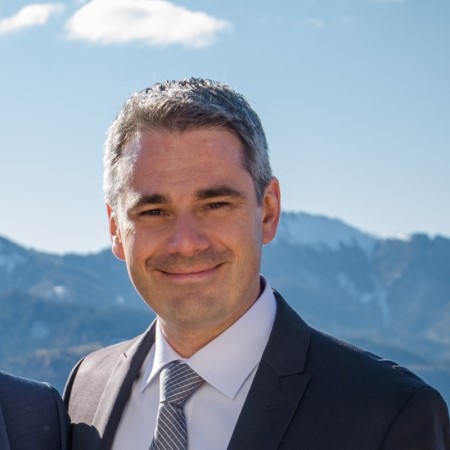Roche Can Extend Lymphoma Lead But Is Still Playing Catch-Up In Myeloma And CAR-T
Fierce Competition In Bispecifics And Allo CAR-Ts
Executive Summary
Roche looks set to keep the upper hand in lymphoma with Polivy and its twin bispecific drugs, but Johnson & Johnson remains the company to beat in multiple myeloma.
Roche has been a leading player in hemato-oncology for decades, stemming from Genentech's launch of Rituxan (rituximab), back in 1997 in B-cell non-Hodgkin's lymphoma and mature B-cell acute leukemia.
It now looks set to continue its leadership with a new generation of lymphoma treatments, but faces stiff competition across the crowded field, including a new wave of bispecific antibodies. Meanwhile, in multiple myeloma and CAR-T therapy, Roche is most definitely playing catch-up.
That fierce competition was played out via an intense burst of data presentations from companies at the American Society of Hematology congress, held 10-13 December in New Orleans.
Roche’s R&D leaders presented analysts with a post-ASH update of its strategy across the field on 14 December. Peter Ahnesorg, head of hematology and global product strategy, said the company had one of the “broadest and deepest portfolios” in (both malignant and non-malignant) hematology, adding: “This portfolio is obviously not by coincidence, it is a result of a very clear strategy.”
However the pressure is growing on this portfolio to perform, as other growth drivers such as checkpoint inhibitor Tecentriq (atezolizumab) and late-stage TIGIT candidate tiragolumab have both stumbled this year.
Making The Case For Polivy In First Line
The company is aiming to continue its dominance in lymphoma with antibody-drug conjugate (ADC) Polivy (polatuzumab) and two new CD20 x CD3 bispecific antibodies glofitamab and Lunsumio (mosunetuzumab), the latter now closing in on US approval after a delay caused by the Food and Drug Administration calling for longer-term data.
The POLARIX study explored exchanging vincristine for Polivy, changing the frontline standard of care for diffuse large B-cell lymphoma (DLBCL) from rituximab plus cyclophosphamide, doxorubicin, vincristine and prednisone (R-CHOP] to R-CHP (rituximab plus cyclophosphamide, doxorubicin and prednisone) plus Polivy.
Newly updated data from POLARIX presented at ASH showed the combination improved relapse-free survival in that setting by around 27% after a median follow- up of three years. It will take much longer before an overall survival benefit is clear, however, as the 10-year OS on R-CHOP is around 43.5%, which could slow its uptake.
This first line DLBCL combination has already been approved in many major markets, including the EU and Japan, with the US Food and Drug Administration’s decision is expected by 2 April 2023.
When the POLARIX data were first unveiled at last year’s ASH, much focus from physicians was on the cost/ benefit of adding an expensive ADC to an otherwise generic regimen. That has led Roche to emphasize Polivy as a way for more patients to achieve a cure in first line treatment, and therefore avoid a subsequent, and very expensive, transplant or CAR-T therapy.
Ahnesorg said while both these options can cure some patients, they also carried risk of extensive adverse events and "financial toxicity"of high cost to healthcare systems and patients. Polivy’s US price is around $90,000 for a four-month course, while a one-time CAR-T therapy costs around $373,000.
“There's been several external analyses now of the immense burden of cost that happens when patients’ disease recurs,” said Ahnesorg. “So we believe with Polivy, we are introducing a solution that offers more patients in the front-line setting an opportunity for cure.”
How Its Two Bispecifics Complement Each Other
Polivy is already established in the second and third line setting in (DLBCL) but has begun to lose market share to CAR-T therapies approved this year in the space, Gilead/Kite’s Yescarta (axicabtagene ciloleucel) and Bristol Myers Squibb’s Breyanzi (lisocabtagene maraleucel).
Roche is looking to regain market share in this setting with its twin CD20 x CD3 bispecific antibodies. Lunsumio, the first in the class to be approved in Europe (in relapsed or refractory follicular lymphoma) and US approval is expected before the end of 2023. (Also see "Roche Notches Up First Approval For CD20xCD3 Bispecific Lunsumio" - Scrip, 8 Jun, 2022.)
As Lunsumio and glofitamab are similar, however, Roche is having to clarify where they fit into treatment regimens. Ahnesorg said Lunsumio’s profile made it best suited for outpatient and community delivery, in patients who have indolent diseases or those not able to tolerate intensive therapy.
By contrast, it is positioning glofitamab as ideal for patients that can tolerate intensive therapy and thereby providing an alternative to CAR-T therapy for patients with aggressive large cell lymphoma, and also expects its first approval in 2023.
The company is also emphasizing the drug’s convenience - it is given as a fixed-duration regimen and a simple dosing schedule, minimizing time patients need to spend in the clinic.
Data presented at ASH showed that from cohort of patients with heavily pretreated LBCL, 74% remained in complete remission after a median follow-up of 18.1 months.
Patients who responded to glofitamab had responses that persisted after treatment stopped, which Roche hopes is a “really strong value proposition for patients” once it gains approval.
However Roche will face plenty of rivals in the CD20 x CD3 space, most notably Genmab and AbbVie’s epcoritamab. The partners presented data at ASH consolidating the view that epcoritamab could be best-in-class, and had its filing accepted by the FDA late last month. Regeneron reported at the congress data from a higher dose of its contender odronextamab from the pivotal ELM-2 study, though this was marred by five treatment-related deaths. (Also see "Genmab Confident It Has Edge Over Roche In Bispecific Battle" - Scrip, 17 Jun, 2022.)
Roche is investing heavily in a raft of studies combining its bispecifics with other agents in a range of lymphoma subtypes. These include the Phase III STARGLO study in relapsed/refractory DLBCL, where glofitamab is combined with chemotherapy, with results expected by 2024.
Meanwhile, the Phase III COALITION study involves glofitamab being tested in the front-line setting in combination with Polivy and R-CHP to build on the POLARIX regimen, also expected to have an early 2024 readout.
Challenging In Multiple Myeloma
While Roche looks dominant in lymphoma, its presence in multiple myeloma is limited, and Johnson & Johnson remains the company to beat. J&J’s Genmab-partnered Darzalex (daratumumab) is now established as the backbone of frontline therapy, earning $7bn a year.
Roche has been trying to break into myeloma with its BCL2 inhibitor Venclexta (venetoclax) co-marketed with AbbVie for years, but safety concerns have delayed its progress. The drug is now earning annual revenues of around $2bn through its use in chronic lymphocytic leukemia and acute myeloid leukemia.
Roche and AbbVie are awaiting data from the CANOVA study, comparing it with pomalidomide and dexamethasone in patients with relapsed or refractory myeloma. The study is looking at Venclexta in a selected population of patients that have the t(11;14) translocation. However that limited reach means the company needs to look at new mechanisms to gain greater traction.
The company is also developing bispecific antibodies for myeloma, including cevostamab, the first drug to target FcRH5, a B-cell-specific surface protein. Roche said early data show targeting FcRH5 to be a “very potent” way to address multiple myeloma, and Phase I results will be ready in 2023.
While Roche is looking to catch up, J&J continues to break new ground in myeloma. Earlier this year, it launched Carvykti (ciltacabtagene autoleucel), one of several competing BCMA-targeting CAR-T therapies for myeloma patients who have advanced after multiple lines of treatment.
As CAR-T’s limitations are well known, J&J has also just launched Tecvayli (teclistamab). This is the first bispecific T-cell engager antibody for patients with relapsed or refractory multiple myeloma, which gained US approval in October. (Also see "J&J Adds Second Anti-BCMA Myeloma Therapy In US With Tecvayli Approval" - Scrip, 26 Oct, 2022.)
Roche Enters CAR-T Field But Still Has Reservations
Meanwhile Roche recently ended its long-standing shunning of cell therapy and CAR-Ts by establishing a partnership with Poseida Therapeutics in August.
The lead candidate in this partnership is P-BCMA-ALLO1, an allogeneic CAR-T for multiple myeloma, currently in a Phase I study. A second candidate is P-CD19CD20-ALLO1, an allo dual CAR-T for B-cell malignancies with an IND expected in 2023.
Poseida’s early data has shown its platform generate the sector’s highest levels of stem cell memory T cells. As these persist longer than other T cell populations, the partners believe this could help them crack the durability problem, currently the biggest hurdle in allo CAR-Ts.
However Ahnesorg made it clear that Roche still sees bispecifics as being in the vanguard and CAR-Ts playing a less central role.
“There will always be a space for CAR-T…but there is going to be lots of patients not be well served with CAR-T. We believe the bispecifics - and particularly our bispecifics - have a much better value proposition.”
A New Mechanism- GPRC5D
Also attracting lots of attention at ASH was J&J's talquetamab and its pivotal Phase I/II study MonumenTAL-1.
Talquetamab is a potential first-in-class GPRC5D x CD3 bispecific antibody and early data suggested durable responses in patients with heavily pre-treated multiple myeloma.
It achieved overall response rates of 74.1% and 73.1% via subcutaneous (SC) doses of of 0.4 mg/kg weekly and 0.8 mg/kg every two weeks respectively (though it is also studied in intravenous (IV) formulation) with a median duration of response of nine months or longer.
GPRC5D blockade is shaping up to be an important new mechanism in the field, which Roche and others are also pursuing.
Roche presented Phase I data for its GPRC5D bispecific forimtamig, also being studied in IV and SC forms. In Phase I dose escalating data presented at ASH, its ORR was 71.4% in the IV arm, and 63.6% in the SC cohort.
While those initial topline results looked less promising than J&J’s, Roche insists that its candidate can be best-in-class in GPRC5D, thanks to tweaks to the molecule aimed at overcoming safety issues in the class.
Roche’s Phase I dose-finding study is ongoing, with initial data expected to help provide a steer in 2023. However that will still put it far behind J&J, which submitted its BLA for talquetamab to the FDA on 9 December. That likely sets it up for a 2023 approval, which could consolidate J&J’s dominant position in myeloma similar to Roche’s leadership in lymphoma.

